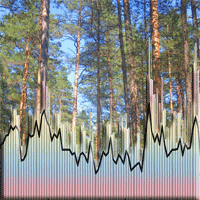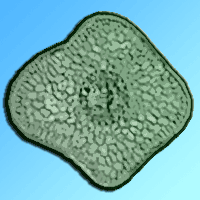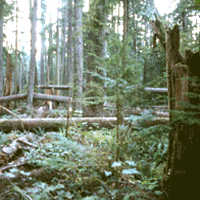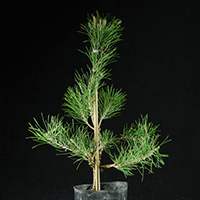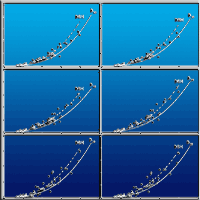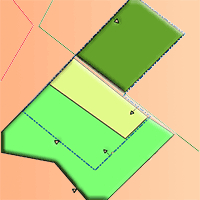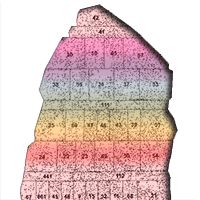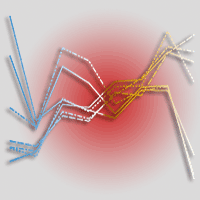
The influence of age and crown position on growth efficiency along a Scots pine chronosequence
Mieczyslaw Turski , Hanna Kwasna, Cezary Beker, Roman Jaszczak, Katarzyna Kazmierczak, Tomasz Najgrakowski, Wojciech Borzyszkowski
iForest - Biogeosciences and Forestry, Volume 12, Issue 5, Pages 474-479 (2019)
doi: https://doi.org/10.3832/ifor2953-012
Published: Oct 14, 2019 - Copyright © 2019 SISEF
Research Articles
Abstract
The study deals with the effects of age and crown position (either dominant or intermediate, as determined by Kraft’s social class) on stemwood growth efficiency (GE), which is viewed as the ratio of annual stemwood volume increment of the previous five years to needle volume of the entire tree, in eight even-aged pure stands of Scots pine (Pinus sylvestris L.). The highest GE was observed in the youngest stands, and the lowest in the oldest ones. There was no clear interdependence of GE on the age of intermediate stands. GE was most variable in the youngest, the 25-year-old stand, and was the least variable in the 74-year-old stand. GE in dominant trees was lower in 25- 74- and 85-year-old stands and higher in 33-, 44-, 56-, 64- and 93-year-old stands. The GE ratios of dominant trees to intermediate trees in 25-, 33-, 44-, 56-, 64-, 74-, 85- and 93-year-old stands were 0.47:1, 1:0.93, 1:0.87, 1:0.81, 1:0.86, 0.88:1, 0.90:1 and 1:0.61, respectively. Tree age had a statistically significant effect on GE; however, the contribution of the age factor to GE was assessed as weak. Generally, the position of trees (whether dominant or intermediate) had no effect on GE, while age × position of trees had a statistically significant effect on GE, which means that the two factors interacted. The correlation between GE and tree height, diameter at breast height (DBH), and the needle volume of the entire empirical material was statistically significant with a negative sign; however, the situation varied among the particular stands.
Keywords
Pine, Needle Volume, Growth Efficiency, Dominant Trees, Intermediate Trees
Authors’ Info
Authors’ address
Hanna Kwasna 0000-0001-6135-4126
Cezary Beker 0000-0002-7929-2477
Roman Jaszczak 0000-0003-2517-5766
Katarzyna Kazmierczak 0000-0003-0201-7917
Tomasz Najgrakowski 0000-0003-2913-0434
Wojciech Borzyszkowski
Department of Forest Management, Faculty of Forestry, Poznan University of Life Sciences, Poznan (Poland)
Corresponding author
Paper Info
Citation
Turski M, Kwasna H, Beker C, Jaszczak R, Kazmierczak K, Najgrakowski T, Borzyszkowski W (2019). The influence of age and crown position on growth efficiency along a Scots pine chronosequence. iForest 12: 474-479. - doi: 10.3832/ifor2953-012
Academic Editor
Angelo Nolè
Paper history
Received: Aug 27, 2018
Accepted: Aug 02, 2019
First online: Oct 14, 2019
Publication Date: Oct 31, 2019
Publication Time: 2.43 months
Copyright Information
© SISEF - The Italian Society of Silviculture and Forest Ecology 2019
Open Access
This article is distributed under the terms of the Creative Commons Attribution-Non Commercial 4.0 International (https://creativecommons.org/licenses/by-nc/4.0/), which permits unrestricted use, distribution, and reproduction in any medium, provided you give appropriate credit to the original author(s) and the source, provide a link to the Creative Commons license, and indicate if changes were made.
Web Metrics
Breakdown by View Type
Article Usage
Total Article Views: 40653
(from publication date up to now)
Breakdown by View Type
HTML Page Views: 34789
Abstract Page Views: 2285
PDF Downloads: 2809
Citation/Reference Downloads: 1
XML Downloads: 769
Web Metrics
Days since publication: 2254
Overall contacts: 40653
Avg. contacts per week: 126.25
Citation Metrics
Article Citations
Article citations are based on data periodically collected from the Clarivate Web of Science web site
(last update: Mar 2025)
Total number of cites (since 2019): 1
Average cites per year: 0.14
Publication Metrics
by Dimensions ©
Articles citing this article
List of the papers citing this article based on CrossRef Cited-by.
References
Waldertragskunde. [Forest Yield Science]. BLV-Verlagsgesellschaft, München-Bonn-Wien, pp. 490. [in German]
Gscholar
Uber den Zuwachs der sozialen Baumklassen in Kiefernbeständen. [About the growth of social tree classes in pine stands]. Archiv für Forstwesen 3: 233-241. [in German]
Gscholar
Statistical power analysis for behavioral sciences (2nd edn). Lawrence Erlbaum Associates, Hillsdale, NJ, USA, pp. 567.
Gscholar
Kronengröße, Nadelmenge und Zuwachsleistung von Altkiefern [Crown size, needle quantity and increment performance of old pines]. Zeitschrift für das Forst- und Jagdwesen 69: 321-336. [in German]
Gscholar
Above ground net primary production decline with stand age: potential causes. Trees 11 (9): 378-382.
Gscholar
Zwia1zek pomiedzy wielkoscia korony a przyrostem drzew w drzewostanach sosnowych [The dependence of the crown size and tree increment in the Pine stands]. Prace Komisji Nauk Rolniczych i Komisji Nauk Lesnych PTPN 25: 1-48. [in Polish]
Gscholar
Wydajnosć igliwia sosny zwyczajnej w produkcji drewna strzaly. [Efficiency of Scots pine needles in stemwood production]. Sylwan 118 (9): 33-38. [in Polish]
Gscholar
Kronengröße und Zuwachsleistung der Traubeneiche auf süddeutschen Standorten [Crown size and productivity of sessile oak on sites in southern Germany]. Allgemeine Forst- und Jagdzeitung 129 (114): 151-163. [in German]
Gscholar
Kronen- und Zuwachsuntersuchungen an Fichten des bayerischen Alpenvorlandes [Crown and increment studies on spruce trees of the Bavarian Alpine foothills]. Forstwissenschaftliches Zentralblatt 72 (9-10): 276-286. [in German]
Gscholar
Przystepny kurs statystyki z zastosowaniem STATISTICA PL na przykÅÂadach z medycyny [The intelligible statistics course using STATISTICA PL on examples from medicine]. StatSoft, Kraków, Poland, pp. 868. [in Polish]
Gscholar
Gibt es eine baumindividuelle zuwachsoptimale Überschirmung - ein Beitrag zur Theorie des Einzelbaumwachstums [Is there a tree-specific growth-optimal shielding - a contribution to the theory of individual tree growth]. Austrian Journal of Forest Science 2: 55-68. [in German]
Gscholar
Response of aboveground biomass increment, growth efficiency, and foliar nutrients to thinning, fertilization, and pruning in young Douglas-fir plantations in the central Oregon Cascades. Canadian Journal of Forest Research 22: 1278-1289.
CrossRef | Gscholar

